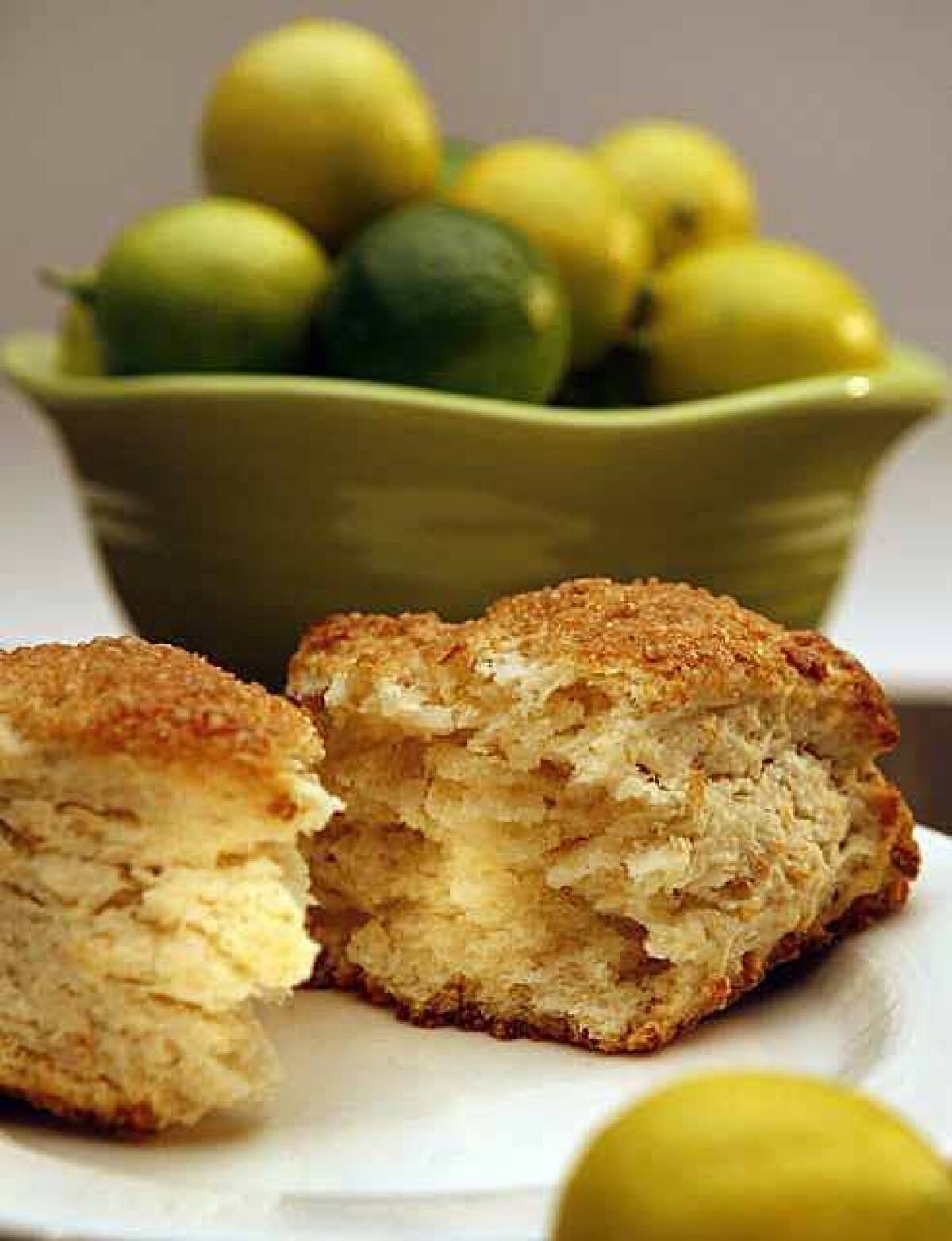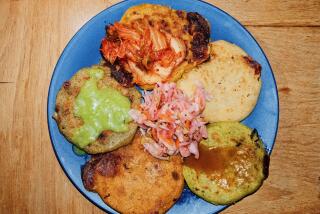Key lime: Handle with care

At first glance, Key limes are hard to resist. Bright green, shading to lemon yellow, smooth, compact and tiny, they’re adorably cute -- yeah, cute, just like a little puppy. It’s hard not to want to snatch a bag or two along with your other groceries.
Of course, once you have gotten them home, you have to use them. You can break out the cocktail shaker -- a no-brainer -- Key limes have often been referred to as the “bartender’s lime,” and they readily complement a whole host of libations. But then what? Fix margaritas for a small party and you may still be left with several cute little limes, sitting sadly alone on your counter like a tragic still life. What to do?
You might be tempted to substitute them for the larger limes, lemons or even some other citrus in a recipe, but be careful, because these cute little puppies pack a powerful bite.
Pair them with the right ingredients, however, and they can brighten an otherwise ordinary dish, adding depth and dimension. Give them a little room and they can add wonderful complexity, shining as a main flavor, highlighting a layered harmony, even working as a seasoning. They’ve got a wonderful personality if you just get to know them.
Like all members of the citrus family, Key limes have a definite acidity. They’re tart, sharp and incredibly sour, even more so than other limes -- they’re almost borderline bitter. Key limes are extreme. And despite their yellowish cast, don’t confuse them with lemons.
But after you get over the initial acidity, you might notice the herbal notes -- Key limes have their own harmony going on -- a bouquet almost. They’re not a one-note fruit.
The key to cooking with them is balance. Because their flavor and nose are so assertive, Key limes don’t always go well with other flavors. They won’t readily share the stage. You really need to fine-tune to get a good balance.
Lime differences
There are differences between Key limes and the limes we find in stores (commonly called “Tahitian” or “Persian,” even though they are not grown in Iran). Key limes (also called Mexican or West Indian limes) are the most common lime found throughout the world; the U.S. is the exception in preferring the Persian lime.
That’s largely due to an accident of history. Key limes were commercially produced in Florida back at the turn of the last century, but the crop was wiped out by a hurricane in 1926. When the growers replanted, they chose the Persian lime, which is more disease-resistant and heavier bearing, though Key lime trees can still be found in many residential backyards.
Along with cocktails, probably the most popular way to use Key limes is in the eponymous pie. About the only thing everyone agrees on is that it includes Key lime juice, but that’s where the agreement ends. Most recipes combine the juice with sweetened condensed milk (some devotees swear by Borden’s, now marketed as Eagle Brand) and egg to form a rich custard. After that, almost anything goes. It can be spooned into either a graham cracker or pastry crust, and topped with either meringue or whipped cream.
Many older recipes do not call for baking the custard even; the lime juice alone thickens the mixture over time to “set” the custard.
Cookbook author Rose Levy Beranbaum takes the pie in a different direction, which I like better. She lightens the custard with a bit of Italian meringue. Not only does it improve the texture, but it also helps distinguish the flavors on the palate, brightening the lime. The custard is baked in a classic graham cracker crust (baking helps to thicken the texture and firm up the slices) and topped with the remaining meringue, which is baked just long enough to slightly brown the edges.
Incidentally, Beranbaum prefers the Persian lime for the pie. She says the Key lime’s “bitterness seemed to penetrate the sweetness.” I prefer the punchiness of the Key lime.
The recipe is simple. Probably the hardest part is waiting long enough for the pie to chill sufficiently to eat.
One quick note here: You can’t bottle fresh flavor. Packaged Key lime juice may look easy, but it tastes like the shortcut that it is. Generally made from concentrate and treated for preservation, it lacks punch and often has metallic undertones.
Anyway, it’s not hard to find fresh Key limes in most Mexican markets (technically, they have a season, but they’re grown in so many places that you can find them year-round). Look for limes that are heavy for their weight, green shading to yellow (yellow signals ripeness, and makes for a slightly less tart lime). Store them at cool room temperature because refrigeration can speed decay.
Sweet or savory
It seems, more often than not, that Key limes (and limes in general) appear in sweet recipes, but they can be just as great in savory dishes.
Again, balance is the key. Sweet dishes tend to “tame” lime with sugar or other sweeteners, toning it down and softening it. At the same time, in many savory dishes, the sharp flavor is often contrasted with a spice and/or rich texture, as with guacamole. Lime juice is frequently used in marinades and dressings. Toss some arugula with grapefruit and avocado, then finish the salad with a light dressing of lime juice, honey and cumin. It’s a simple presentation, but the flavors can be stunning -- the balance comes from the sweetness of honey, the spice of cumin and the richness of avocado.
Or try a ceviche. Toss cubed fish in lime juice just until it turns opaque. The acid from the lime firms the fish, much like cooking, and it’s balanced by fresh-chopped serrano or jalapeño chile and cilantro. Indeed, lime and chile are frequently paired. Try combining them for a spicy, tangy marinade. It works well with chicken and makes for a particularly fun take on hot wings.
Or try a spicy Thai-inspired marinade: lime juice, chiles, onion, ginger and garlic. Season with a little soy sauce and toss in a bit of chipotle powder to add a smoky element. Marinate a couple pounds of chicken wings for a few hours, up to overnight, then fry until golden. Brush the wings with a sweet peanut sauce and finish them in the oven until the sauce cooks to a nice shellac. The combination of flavors is striking: First, you get the sweet peanut sauce, followed by the sharp acid and heat from the marinade.
Key limes also go particularly well with coconut. While the lime can be overwhelmingly tart, it works nicely with the rich, sweet flavor of coconut.
Try pairing Key lime and coconut in a scone. Substitute coconut milk and a little fresh lime juice for the liquid in a standard recipe, adding some toasted coconut for crunch and a little fresh lime zest to brighten the composition.
It’s a fun recipe, not overly sweet, and you don’t have to wait as long for scones to chill as you would a pie. Besides, they’re cute. But these puppies won’t bite.
More to Read
Eat your way across L.A.
Get our weekly Tasting Notes newsletter for reviews, news and more.
You may occasionally receive promotional content from the Los Angeles Times.











